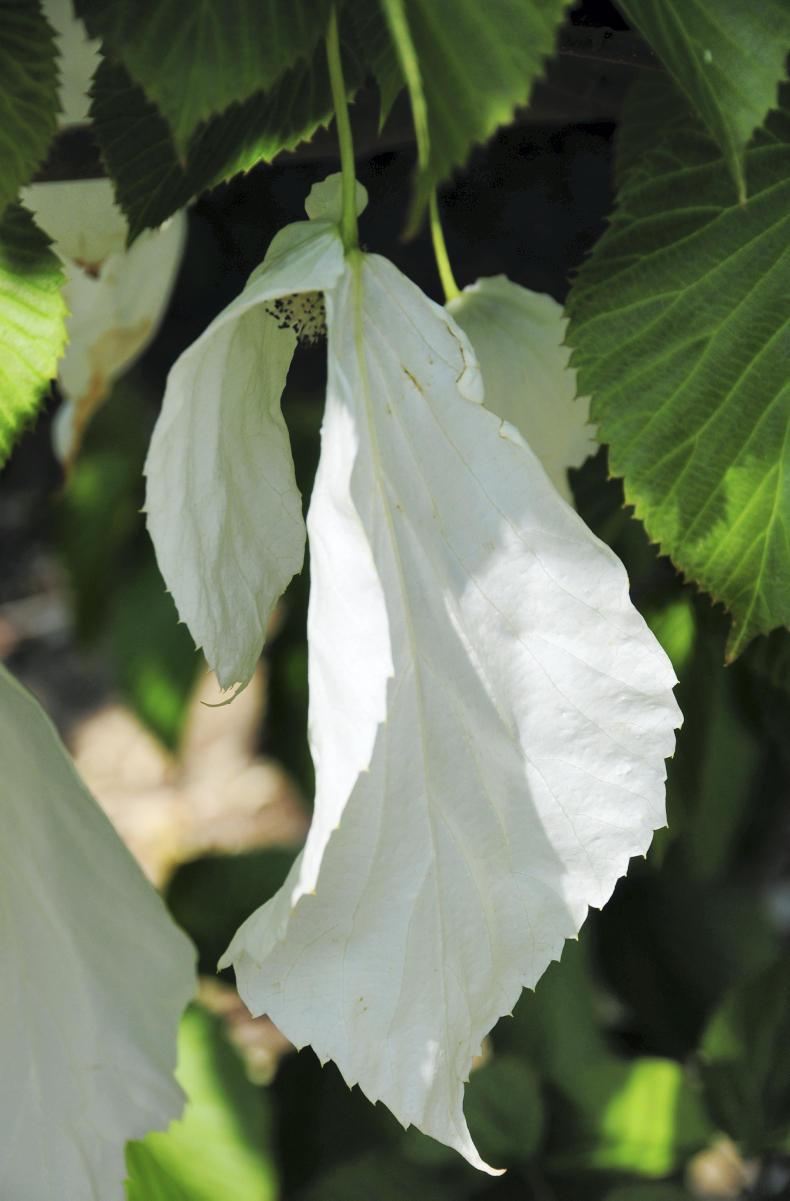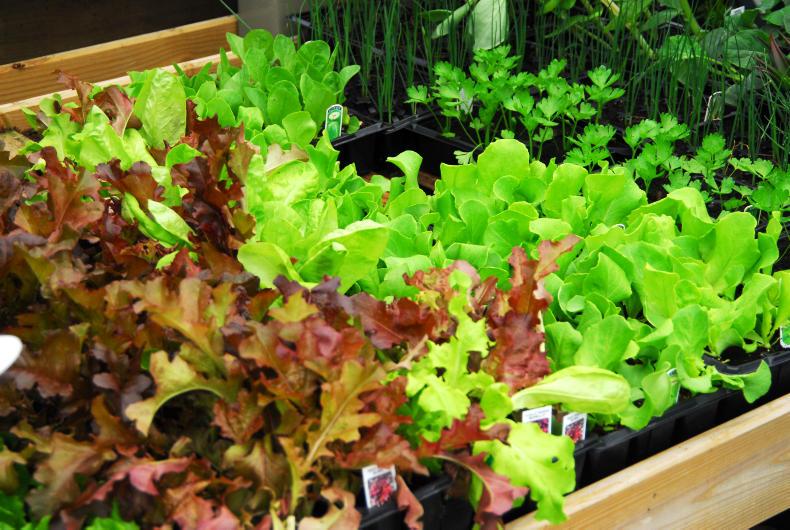The dove tree is not seen all that often in ordinary gardens, but it does appear in tree collections and in the big publicly owned gardens. If a private garden has a dove tree, it is a sure sign that the garden owner has considerable knowledge of, and love for, trees. The dove tree is not widely available to buy in garden centres, and it might take a little persistence to find it.

The dove tree is also called handkerchief tree and ghost tree, all of these common names inspired by the very unusual flowers. The flowers are composed of a pair of leaf-like white bracts that, strangely, are of unequal size, but have a similar hanging, wing-like, shape.
Bracts are adapted leaves, but they often retain some green colour. These ones do not – they are of the purest, most brilliant white. No photograph can represent the colour perfectly, because the surface of the bracts is not flat like a photograph. The surface has a soft sheen or even a tiny reflective sparkle when looked at close-up in sunshine.
The bracts are there to attract pollinators to the fertile parts of the flowers. These parts form a rounded puff of dozens of reddish-purple anthers surrounding a single female ovary. The flower hangs at the end of a drooping flower stalk, and the bracts are eventually shed when the flower is pollinated.
Later, the female flower part develops into a rounded greenish-yellow fruit dangling at the end of the flower stalks from bare branches. Most dove trees set some seeds and the effect of the hanging seeds going into winter, set against bare branches, is graceful and decorative.
The leaves have a pointed oval shape and hang down along the branches, quite like those of a lime tree. They are a lovely, fresh apple-green in spring and set off the white flowers to perfection. In autumn, the dove tree foliage changes to pretty shades of yellow, sometimes with a touch of brown on the side.
The dove tree, Davidia involucrata, is native to China and, unusually, it is the only species in its genus. Indeed, botanists find it difficult to categorise, sometimes placing it in the dogwood family, or in its own single-species family. It got its name from Pere David, a French missionary to China who was a very successful plant collector in the 19th century, and the plant was only introduced to Europe in 1904, all of which adds to its mystique.
Handkerchief tree is capable of reaching about 15m, though usually less. It is a plant for medium to large gardens and does not look right squeezed into a small space. If grown from seed, the trees can take 10 years or more to flower, but it can be grown from cuttings too, and these trees usually flower at a younger age. The seed is sown fresh in autumn and can take two years to sprout, needing the chilling effect of two winters to trigger germination.
It grows in any good, fertile soil that is well-drained but does not dry out in summer. It needs some shelter from harsh winds, but it is otherwise hardy and can be grown in inland gardens. It is a fine tree for a country garden as a specimen in a lawn or a prominent position in a large border or with other trees but needs room to develop its fine shape and to show off its remarkable flowers.
To stand under a dove tree that you have planted, and look up at the flowers, is wonderful.






 This is a subscriber-only article
This is a subscriber-only article






SHARING OPTIONS: